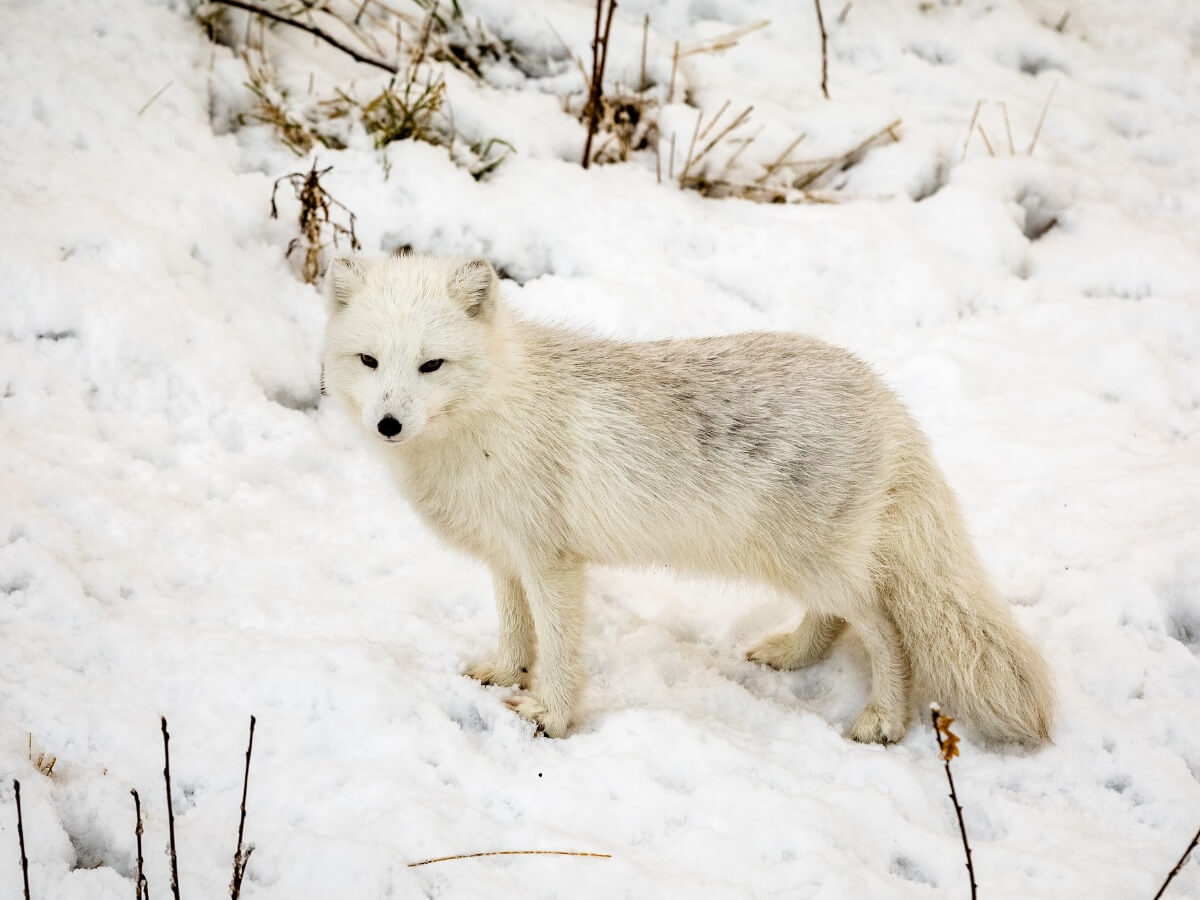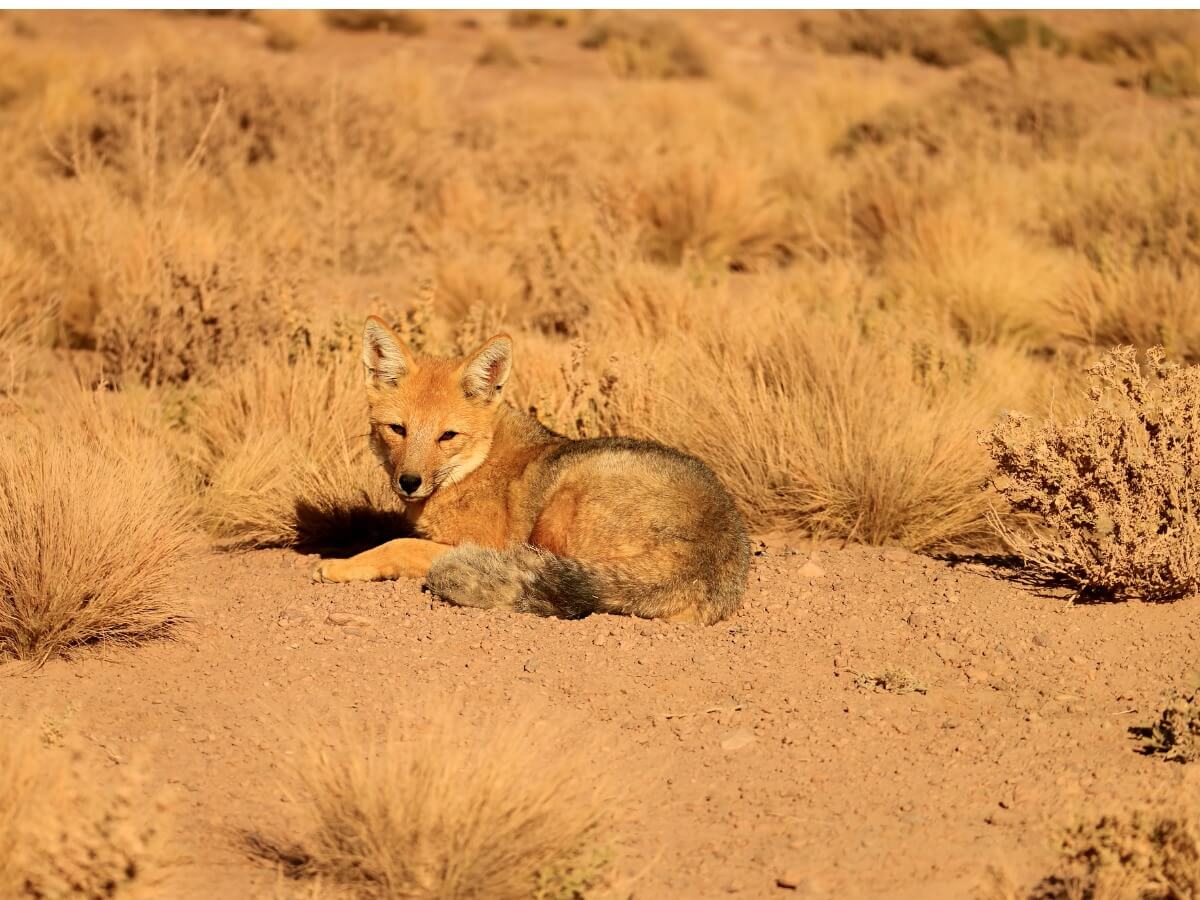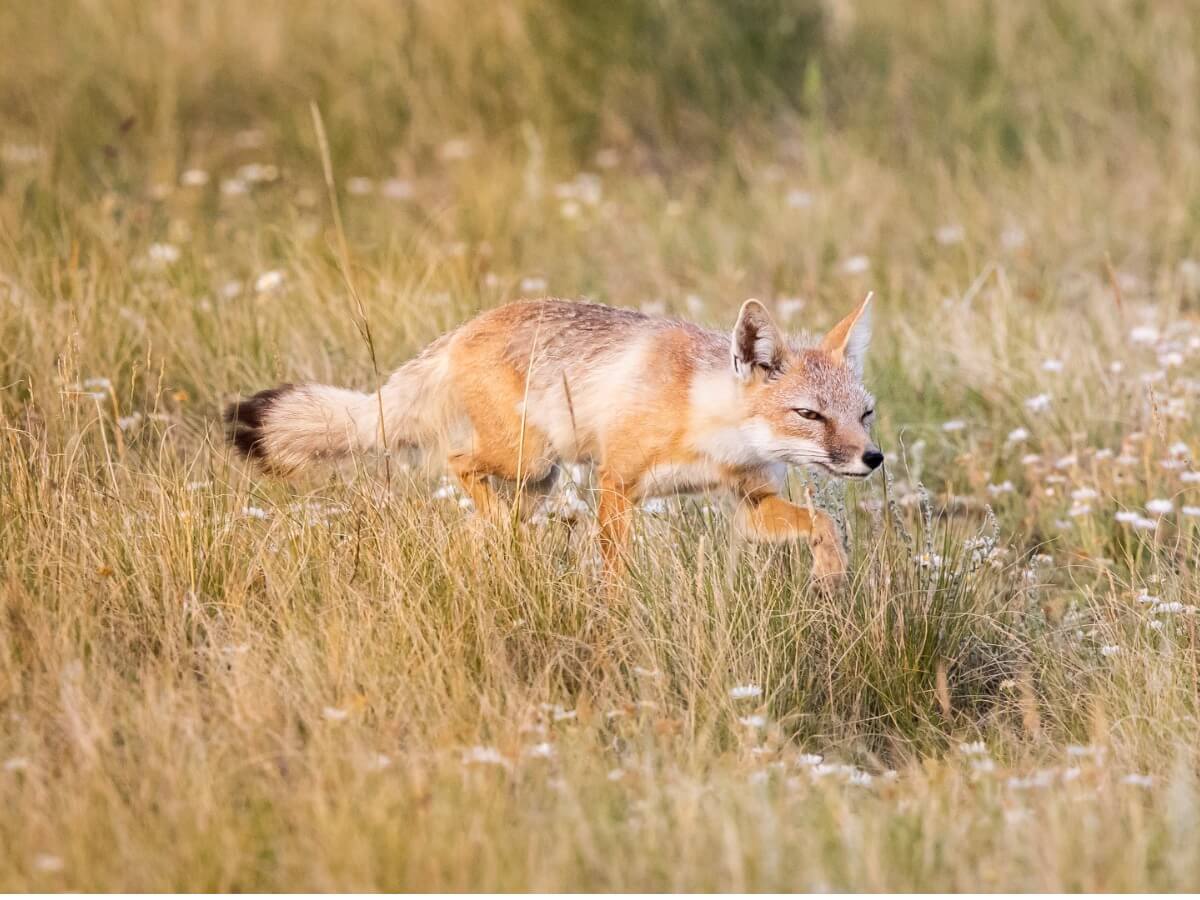Types of Foxes

These canids are related to dogs, wolves, and coyotes. They have a more flattened skull and are smaller than jackals, wolves and dogs, but they have a great facility for jumping and capturing prey. There are at least 25 types of foxes, whose morphology and adaptations vary according to their habitat.
Despite being cunning hunters, their diet is opportunistic and omnivorous, and when they can’t find prey, foxes can easily feed on berries, dead animals, or even waste in urban areas. If you want to learn more about some of the different types of this beautiful animal, read on.
How many types of foxes still exist today?
Of the 25 known types of foxes, only 13 species are alive today. They can be found almost anywhere in the world, but predominate mainly in Europe and North America. Here are the most representative species of what we know today as foxes, each one just as beautiful and fascinating. Enjoy our selection!
Fennec fox (Vulpes zerda)
Also known as the desert fox, Vulpes zerda is characterized by its small size and disproportionate ears. It’s a hunter that inhabits the Sahara, where it feeds on small rodents, insects and birds. It has adapted so well to its environment that it hardly needs to drink water, as it obtains it from its prey.
Its hearing is exceptional, as this is how it finds its prey in the desert nights. To give you an idea, if you were to get close enough to one of these canids, it would be able to hear your heartbeat without holding its ear to your chest. Its pinna is exceptionally large because it also helps it dissipate heat.

Red fox (Vulpes vulpes)
This inhabitant of the Northern Hemisphere populates mountains, plains, forests and beaches, and is the best-known species in the popular imagination. In Australia, red foxes were introduced in the 19th century, and their status as an invasive species is still a problem today.
The hunting of this species is known worldwide. Although the red fox isn’t considered endangered, stopping the extermination of individuals around the world for their fur and activities such as fox hunting in England is still the goal of many animal protection organizations.

Arctic fox (Vulpes lagopus)
The most astonishing thing about this species is its fur, which makes it one of the most striking types of foxes. While in winter its coat is immaculately white, in summer it blends in with the brown of the ground, a color that remains after the spring thaw.
This thick fur makes it one of the few animals that survive on the frozen steppes of the North Pole. The arctic fox is able to detect prey moving under the snow and catches them effectively, surprising them with its characteristic swooping leap.

Crab-eating fox (Cerdocyon thous)
An inhabitant of wooded and scrubby areas, C. thous can be found from Colombia and Venezuela to Uruguay and northern Argentina. Like the other species, it’s a solitary and nocturnal mammal. In the breeding season, however, it can be seen hunting with its mate to feed the young.

Kit fox (Vulpes macrotis)
This is the smallest species within the fox family. It also has a more slender body and can be seen hunting during the day, unlike other members of this list.
The kit fox is distributed throughout the arid zones of North America, specifically in the United States and in the Chihuahuan Desert of Mexico. Its coloration varies according to the geographical area, from faint gray to grayish yellow. Take a look at the video below to get to know it better.
Culpeo (Lycalopex culpaeus)
By contrast, the Culpeo, sometimes known as the Andean fox or Andean wolf, is the largest fox in South America, since the only canid that exceeds it is a wolf (the maned wolf). It can weigh up to 7 kilograms (over 15 pounds) and its coat has the characteristic reddish tone, although it’s more of an orange hue.

Swift fox (Vulpes velox)
Also an inhabitant of North America, its distribution area is more northerly, reaching as far as Canada. It’s small and its fur is reddish, but it also has black and yellow patches. In addition, while most foxes only live an average of 4 years in the wild, this one can live up to 6 years.
Although both parents care for the young until they become independent, in this species it’s the female that occupies fixed territories, with the males entering them during the breeding season.

Gray fox (Urocyon cinereoargenteus)
This fox’s coat color is the result of the superposition of black and white hairs, not of a gray tone per se. A curious detail is the reddish coloration on the ears.
It’s quite a different type of fox, capable of climbing trees and swimming, which makes it a highly specialized predator. In addition, endowed with the acute intelligence of its species, it leads its prey to the water, where it catches them easily when they are drowning.

Pampas fox (Lycalopex gymnocercus)
As its name indicates, this canid inhabits the pampas of Paraguay, eastern Bolivia, Uruguay, southeastern Brazil, and Argentina. As it’s a good nocturnal hunter, during the day it rests in burrows that it rarely digs by itself, since it occupies those of its prey, abandoned hollows or crevices in rocks.
Most fox species aren’t endangered, but the hunting they suffer cannot be ignored, since their interaction with humans is usually in the role of hunting objects or as thieves of farm animals. Like all predators, this canid plays a fundamental role in ecosystems, so the fight to preserve it cannot stop until it lives in peace.
Take a look at the following link to get to know another type of fox!
All cited sources were thoroughly reviewed by our team to ensure their quality, reliability, currency, and validity. The bibliography of this article was considered reliable and of academic or scientific accuracy.
- The UICN Red List of Threatened Species. Vulpes. Diponible en: http://www.iucnredlist.org
- A. (s. f.). Caza el zorro con perros en Inglaterra. AnimaNaturalis. Recuperado 28 de julio de 2021, de https://www.animanaturalis.org/n/caza-el-zorro-con-perros-en-inglaterra
- González Bernal, A. (2008). Distribución de la zorra del desierto (Vulpes macrotis) en relación a sus presas ya su principal depredador, el coyote (Canis latrans) (Doctoral dissertation).
